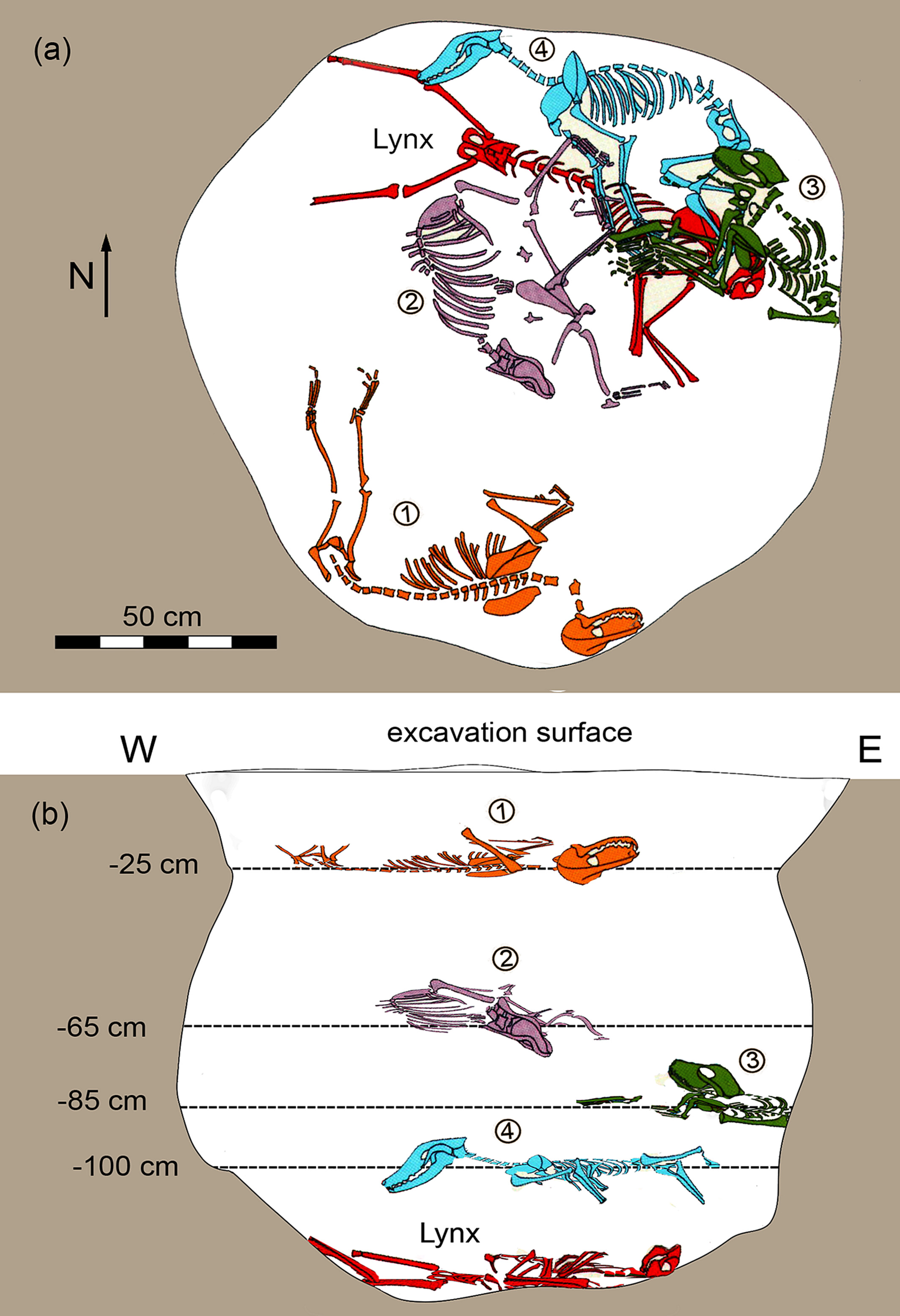Archaeologists in Hungary have discovered something weird in a Roman-era pit: the skeletal remains of a lynx buried in a layer below the skeletons of four dogs. Not only is this find puzzling, but it is also the only known archaeological example of a complete Eurasian lynx skeleton to be found in Europe.
The Eurasian lynx, a species of wild cat known for its tufted ears, bobbed tail, and large paws, is a rare sight in Europe today. These aloof animals are known to be the widest-ranging wildcats in the world and can be found in forests across Western Europe, Russia, and Central Asia. However, human activity and hunting have devastated the species in modern times, leading to them becoming endangered.
But while they may be difficult to find today, these shy cats are also hard to find in the archaeological record. This is because, throughout their history, they have avoided humans, so stumbling on their remains in archaeological excavations is rare. In fact, there are only a few examples recovered from sites in Hungary and the Netherlands, and these previous finds are incomplete.
This is why the complete lynx skeleton recovered in the Roman pit is so significant. It was first discovered at a dig site in Zamárdi-Kútvölgyi-dűlő, Hungary in 2002. This site has yielded various finds, including human remains and associated artifacts that have been dated to around the 5th or 6th century – around 1,500 years ago.
The remains were found in a 1.4-meter (4.6-foot) deep pit and were positioned at the bottom, with the dogs (two male and two female) on top. These dogs were roughly the size of a modern German shepherd (the dog breed that is, not a sheep farmer).
The animals do not appear to have been arranged with any purpose, as the archaeologists from the Institute of Archaeology, HUN-REN Research Center for the Humanities, in Hungary, working with a colleague from Stockholm University, note in their study.
“The four dogs rested on their right side with limbs more or less pointing toward the center, males and females alternating. None of them showed particular care in their arrangement.”
The lynx itself and the cranial half of its trunk were turned to the left, while its hind quarters rested on the back with its legs widely open.
“The five animals were not piled on top of each other”, the researchers add. “However, the relatively thin (20–40 cm) [7.9 to 15.7-inch] deposits between them suggest that they may have been buried simultaneously or shortly after one another; one would not expect to find heavily reduced layers in a closed, relatively static deposit.”

The lynx’s remains sit at the bottom of the pit. As can be seen from the diagrams, dog 1 is separate from the others, both in terms of its position as well as the amount of fill between it and the next animal in the pit.
The last dog, the one buried on the top of the deposit, was laid slightly away from the others, which could indicate that it was buried later than the others. This dog also had a layer of fill underneath it that was almost twice as thick as that between the other animals.
“If these patterns are not coincidental (which they may well be), they could indicate the subsequent deposition of dogs, following some concept—or perhaps no concept at all,” the authors explain.
So what is going on here? Well, it is far from clear.
“Even if the lynx looks central to this deposit, its interpretation remains inevitably speculative,” the team added.
The animal’s remains do not show any evidence of skinning, so we can likely rule out fur hunting. It is possible the lynx was killed as a form of vermin control or sport, as they would have likely fed on domestic animals and small game. Like bears, the killing of lynxes in Hungary was driven by, as the authors note, a “near-superstitious hatred of predators”.
It is also possible the cat and the dogs met their deaths together in a fight. These animals can put up a struggle for survival and so cornered lynx may have killed the dogs that attacked it. If this were the case, then the fight may have damaged its pelt, making its fur useless for humans. This could explain why it wasn’t skinned.
The authors conclude: “Possible interpretations thus range from the extremes of tossing the carcass of a vermin into a random pit after a hunting accident to a feature dedicated to a “lynx cult” where additional dogs may have been sacrificed, simultaneously or consecutively. Various combinations of motives could thus result in numerous scenarios in-between the practical/ritual extremes.”
Although it might be tempting to suggest the burial was part of some sort of sacrificial rite, there is little evidence to support it. There is no sign of any ritualistic symbols or other materials in the pit.
“In the absence of additional material, written or ethnographic evidence, spurious ritual interpretations shall not be perpetuated in spite of the indubitably curious nature of the Zamárdi deposit.”
As such, the true nature of this burial remains a mystery and, unfortunately, it may be one we never answer.
The study is published in the International Journal of Osteoarchaeology.
Source Link: Lynx Buried In Roman Era Pit With Four Dogs Stumps Archaeologists